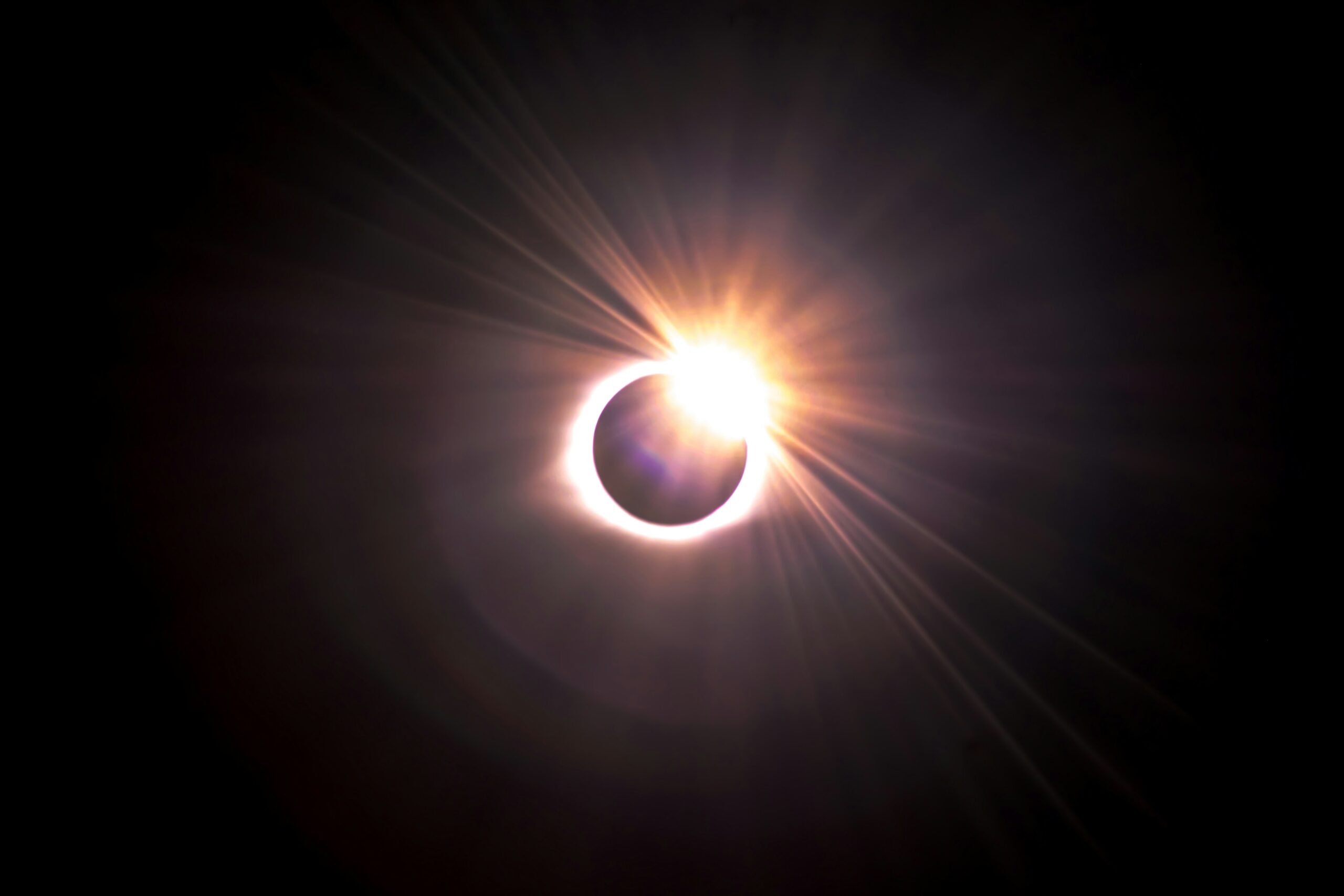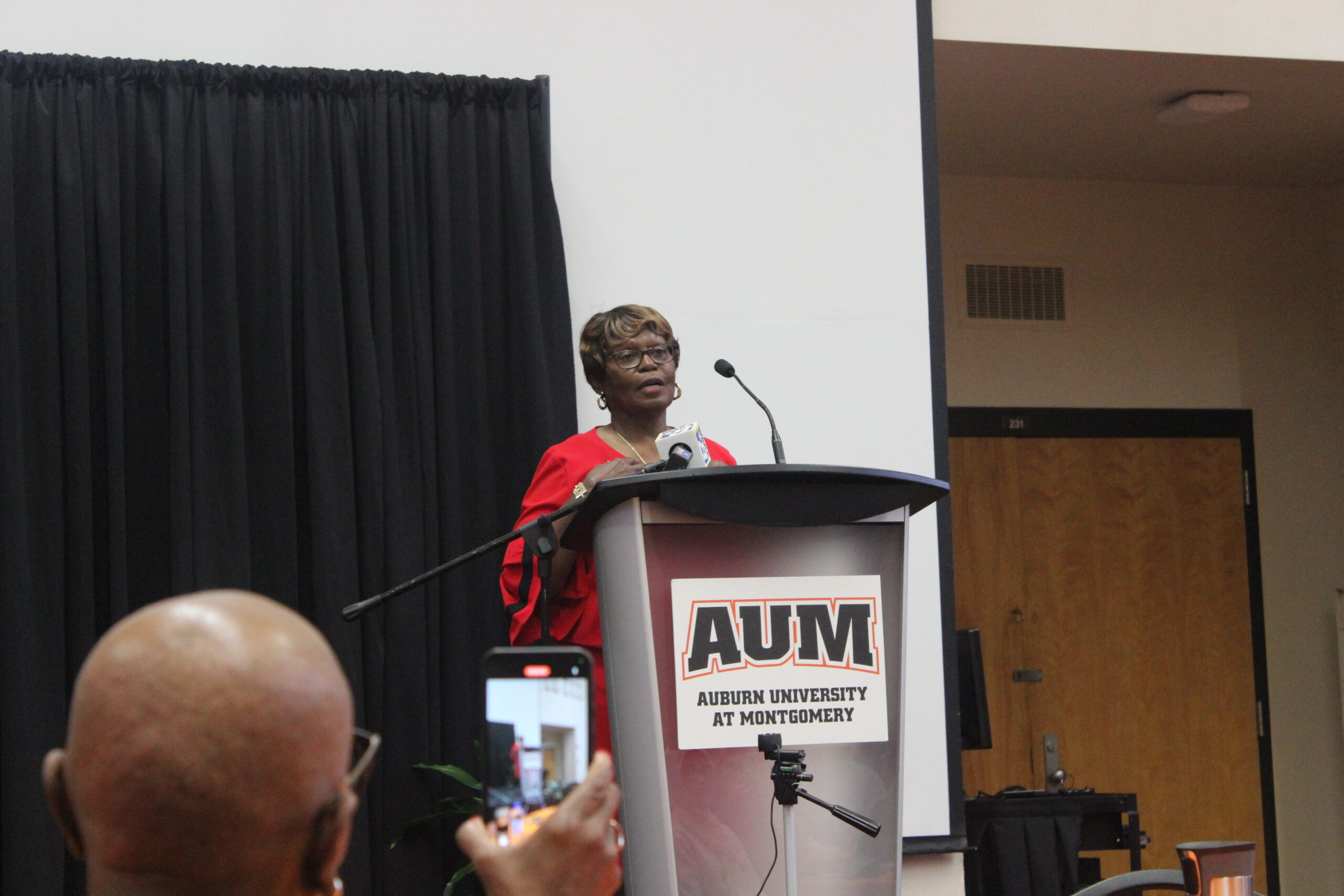By: Jordan White
During the afternoon of April 8, Auburn University at Montgomery’s campus community enjoyed the solar eclipse event open to the public and held on the lawn by the Ida Belle Young Library tower.
Alabama was not on the path of totality for this year’s solar eclipse, but viewers were still able to see the partial eclipse with the proper eyewear. According to NASA, everyone should wear a set of eclipse glasses that comply with the ISO 12312-2 international standard for viewing the solar eclipse. These glasses come darker than regular sunglasses. A total eclipse occurs during the day when the moon completely covers the sun, blocking out its light, according to NASA.

AUM provided most attendees with this type of eyewear. And for those who weren’t to grab a pair of solar eclipse glasses, they lined up to view the eclipse through a telescope, as hosted by Associate professor of Chemistry, Randy Russell, who used a handheld viewing tool that safely showed citizens the solar eclipse. “It’s always exciting to people interested in science or learning in general. That’s what we’re all about is giving people new experiences and helping them to learn,” Russell said in a recent interview for Warhawk Weekly.
Viewers came out for the solar eclipse event, mainly for educational purposes. Homeschool parent Eboni Walker said, “ I came out here for the kids. We homeschool and believe everything is a lesson and this is a great opportunity for them to be able to put their hands on science in a sense.” Director of Housing and Residence Life Iyisha Sanders said, “ I was excited about the history that would happen today, excited to do that with my colleagues, and our AUM students.” Senior Psychology major John Young said, “I wanted to see what was going on with the eclipse. The last one was in 2017 and its really cool to see how the moon goes over the sun.”
According to NASA, solar eclipse enthusiasts will have to wait until August 23, 2044 to see the next solar eclipse.




